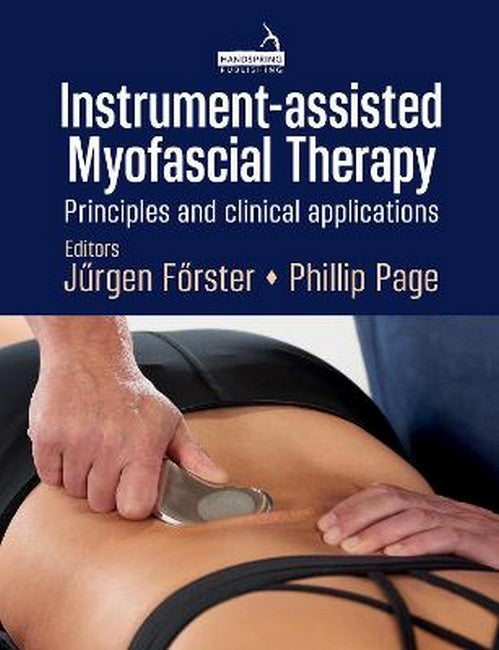Description
Jurgen Foerster is a physiotherapist from the German speaking community of Belgium. He first studied physiotherapy and education in Belgium (Brussels and Liege), then in Germany (Kaiserslautern and Witten-Herdecke) management of health and social care institutions. He has managed several physiotherapy schools in his career, including at the University Hospital RWTH Aachen. For a long time, Jurgen was a lecturer at Aachen University and University of Applied Sciences Aachen in the physiotherapy program. Jurgen received his doctorate in theoretical medical science. He has been an international speaker in the field of musculoskeletal therapy for many years; for more than 10 years he has been intensively involved in the development of the Myofascial Connected System and Instrument Assisted Myofascial Therapy (IamT). He is the author of several articles and of the first German-language book on this subject. Dr Phil Page is an assistant professor and research director at Franciscan University Physical Therapy program. He is a licensed physical therapist and certified athletic trainer. He has a Master's degree in Exercise Physiology and a PhD in Kinesiology from LSU. Dr Page is a Fellow of the American College of Sports Medicine, as well as recipient of the Lifetime Excellence in Education award from the APTA Academy of Sports Physical Therapy. He has presented over 200 international lectures and workshops on exercise and rehabilitation topics and has written over 100 publications as well as 3 books. He has worked with the athletic programs at LSU, Tulane, the NFL New Orleans Saints and Seattle Seahawks, as well as the United States Olympic Track and Field Trials.
Intro: how to use this book Part 1: Evidence-based Practice Ch 1:The myofascial system: anatomy, role in pain/dysfunction/ treatments Ch 2: IASTM: history, types, research on mechanisms of action; research on outcomes Ch 3: Overview of Techniques, specific to tissue...scars, tendons, muscles, etc. Ch 4: Integration in practice: clinical decision making (diagnosis/treatment), indications, contraindications, adjunct treatments Part 2: Clinical Applications of IamT: Upper Quarter Ch 5: Cervical/Head (neck pain, TMJ, headache) Ch 6: Shoulder (impingement, frozen shoulder) Ch 7: Elbow/Wrist/Hand (tennis elbow, carpal tunnel, Duyuytren, hand OA) Part 3: Clinical Applications of IamT: Lower quarter Ch 8: Thoracic (Ribs) Ch 9: lumbar spine (LBP, SIJD) Ch 10: Hip (Pubalgia, OA, groin pain) Ch 11:Knee (Hamstrings, patella tendon, OA) Ch 12: Ankle & Foot (achilles, plantar fasciitis) Part 4: Clinical Applications of IamT: Scars Ch 13: Superficial skin scars Ch 14: Deep scars of the ligaments and capsules after distortions and operations Part 5: Case studies (by other authors) Ch 15: Shoulder Ch 16: Elbow Ch 17: Knee Ch 18: Ankle Ch 19: Cervical Spine Ch 20: TMJ (Temporomandibular joint) Ch 21: Lumbar spine Part 6: Therapeutic integration (by other authors) Ch 22: The contribution of cupping to IASTM Ch 23: The contribution of Flossing (Mobility Bands) to IASTM Ch 24: The contribution of Kinesiology-Taping to IASTM Ch 25: The contribution of Fascial Fitness to IASTM Ch 26: The contribution of IASTM in the treatment of high performance athletes Part 7: Conclusion and Summary - Bringing it all together

